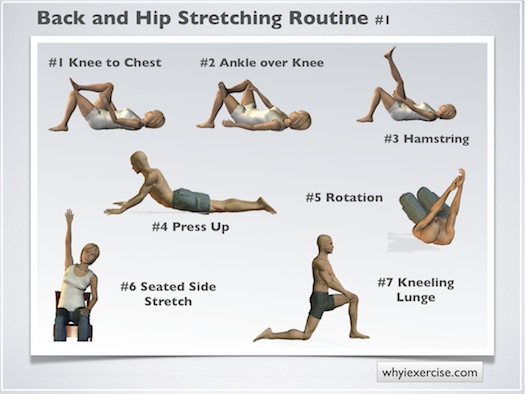Stretching Techniques to Improve Flexibility and Mobility
Flexibility and mobility are cornerstones of physical health, allowing individuals to move freely, prevent injuries, and perform daily tasks with ease. However, these vital aspects of well-being are often overlooked in favor of strength or endurance training. Incorporating stretching into your fitness routine can significantly enhance your overall physical performance and quality of life.
Why Stretching Matters
Stretching offers a host of benefits that go beyond merely preparing your body for exercise. Key reasons to prioritize stretching include:
- Injury Prevention: Flexible muscles are less likely to strain or tear during physical activity. Stretching prepares muscles for movement, reducing the risk of injury.
- Enhanced Posture: Tight muscles, particularly in the chest and shoulders, can pull the body out of alignment. Stretching helps maintain proper posture by alleviating tension.
- Improved Circulation: Stretching promotes blood flow to the muscles, aiding in recovery and reducing soreness.
- Stress Relief: The act of stretching releases physical tension and promotes relaxation, making it an effective stress management tool.
Types of Stretching
- Static Stretching
- Involves holding a stretch in a fixed position for 20-30 seconds.
- Ideal for cooling down after exercise.
- Example: Hamstring stretch.
- Dynamic Stretching
- Uses controlled movements to improve range of motion and prepare muscles for activity.
- Best suited for warm-ups.
- Example: Leg swings or arm circles.
- Proprioceptive Neuromuscular Facilitation (PNF)
- Combines stretching and contracting muscles for deeper flexibility gains.
- Requires a partner or resistance band.
- Example: Contract-relax hamstring stretch.
Effective Stretching Techniques
Morning Stretch Routine
Start your day with gentle stretches to wake up your muscles and improve circulation. Include:
- Cat-Cow Pose: Enhances spinal flexibility.
- Standing Forward Bend: Stretches the hamstrings and lower back.
- Chest Opener: Relieves tightness from sleeping positions.
Pre-Workout Stretches
Dynamic stretches are essential for warming up the body before intense exercise. Examples include:
- Walking Lunges: Activates the quads, hamstrings, and glutes.
- High Knees: Improves hip mobility and cardiovascular readiness.
- Arm Swings: Loosens up the shoulders and arms.
Post-Workout Cool-Down
After a workout, static stretches help the body relax and recover. Try:
- Seated Forward Fold: Targets the lower back and hamstrings.
- Butterfly Stretch: Opens the hips and inner thighs.
- Triceps Stretch: Relieves tension in the upper arms.
Common Stretching Mistakes
- Bouncing: Jerky movements can cause muscle tears. Always perform stretches smoothly and gently.
- Skipping Warm-Ups: Stretching cold muscles increases the risk of injury. Always warm up first.
- Overstretching: Stretch to the point of mild tension, not pain. Pushing too hard can result in strain.
Benefits Backed by Science
Research underscores the importance of stretching in various populations:
- Athletes: Studies show that dynamic stretching improves performance by enhancing muscle activation.
- Office Workers: Stretching reduces neck and shoulder pain caused by prolonged sitting.
- Seniors: Regular stretching improves balance and reduces the risk of falls.
Real-Life Impact
John, a 45-year-old desk worker, experienced chronic lower back pain from sitting for long hours. After incorporating a 10-minute daily stretching routine, he reported significant relief within two weeks. His improved flexibility also enhanced his posture and energy levels.
Stretching for Specific Goals
- For Flexibility:
- Focus on static stretches like forward folds and seated twists.
- For Athletic Performance:
- Prioritize dynamic stretches like high knees and leg swings.
- For Stress Relief:
- Incorporate yoga poses such as child’s pose and downward dog.
Building a Stretching Habit
- Set a Schedule: Dedicate time for stretching in the morning, before workouts, or during breaks.
- Use Tools: Resistance bands and yoga blocks can enhance your stretching routine.
- Track Progress: Note improvements in flexibility and range of motion over time.
Stretching is a simple yet powerful tool for improving physical and mental well-being. By incorporating regular stretching into your routine, you can enhance your flexibility, prevent injuries, and maintain a healthy, active lifestyle.

